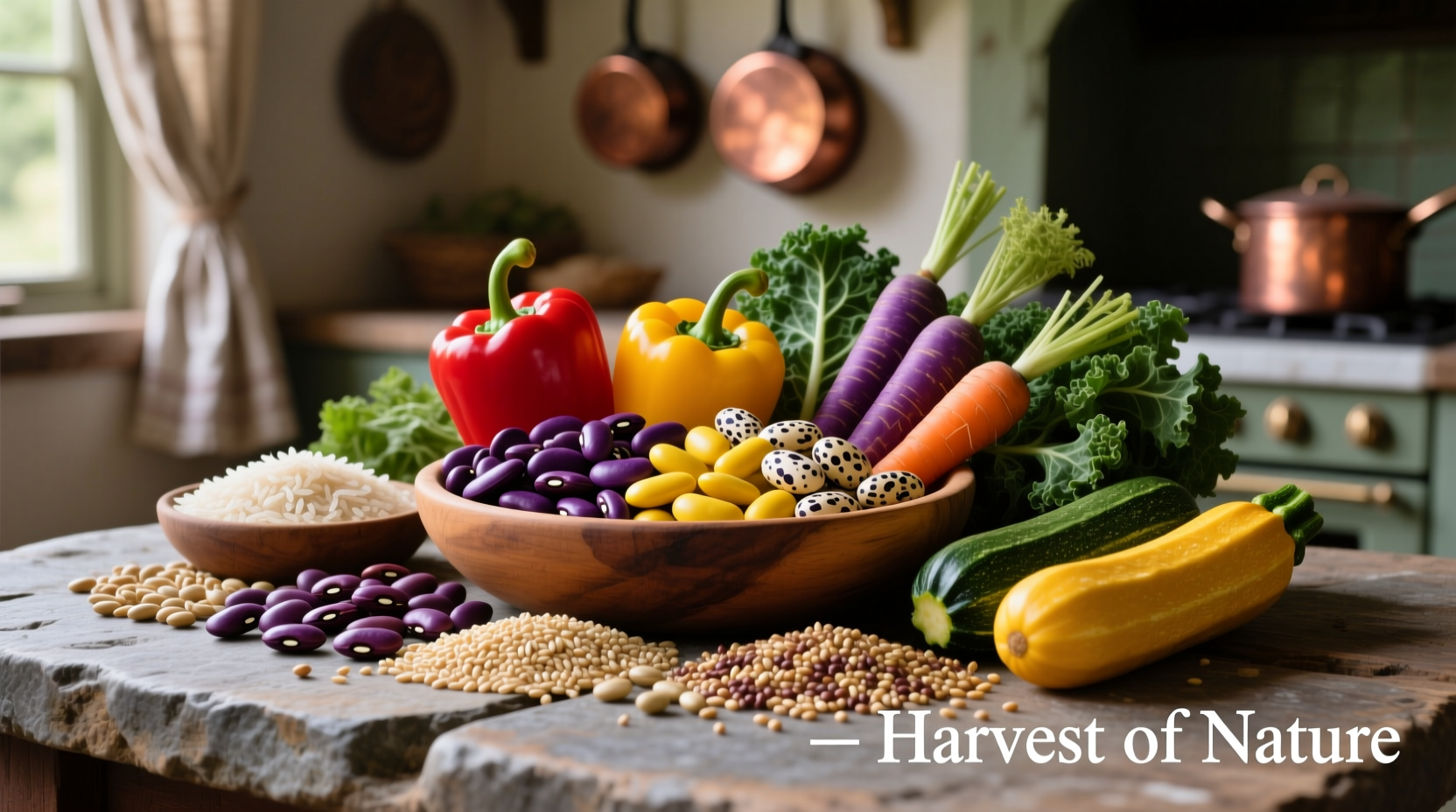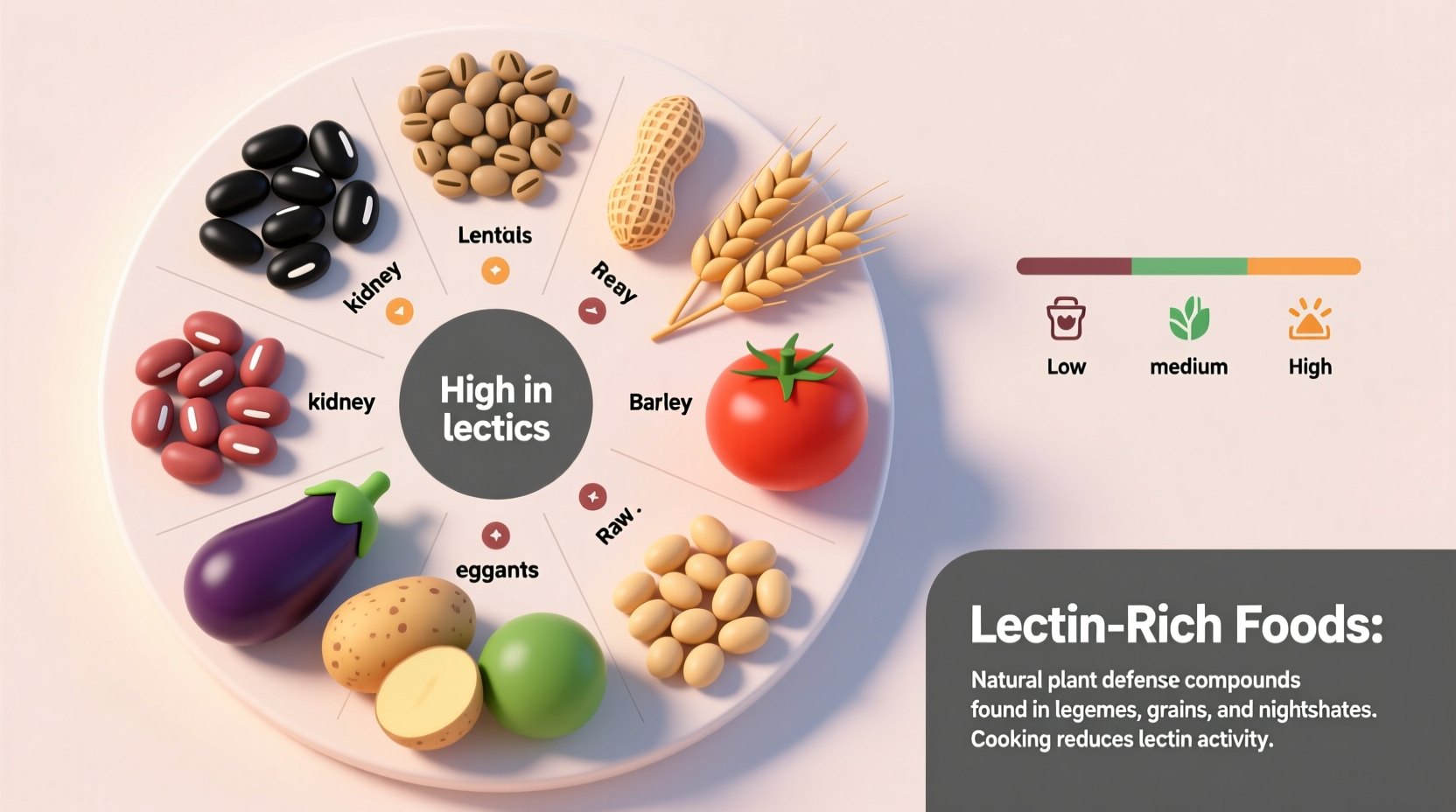Legumes, nightshade vegetables, and grains contain the highest levels of lectins. Specifically, raw kidney beans, soybeans, wheat, peanuts, and lentils have particularly high lectin concentrations. Proper cooking methods like boiling significantly reduce lectin content, making most of these foods safe for consumption in typical diets.
Understanding which foods contain lectins matters for anyone exploring dietary approaches for digestive health or autoimmune conditions. While not dangerous for most people when properly prepared, certain high-lectin foods can cause digestive discomfort in sensitive individuals. This guide provides science-based information about lectin content across food groups, preparation methods that reduce lectins, and who might benefit from moderation.
What Are Lectins and Why Do They Matter?
Lectins are naturally occurring proteins found in plants that serve as a defense mechanism against pests. They bind to carbohydrates and can resist digestion, which is why some people monitor their intake. Most lectins become harmless when foods are properly cooked, but understanding their presence helps make informed dietary choices.
"Lectins aren't inherently bad," explains nutrition researcher Dr. Steven Gundry, whose work has popularized lectin awareness. "The issue arises with modern food processing and consumption of raw or undercooked high-lectin foods." Current research suggests that for the average healthy person, lectins in properly prepared foods pose minimal risk.

Foods Highest in Lectins: A Science-Backed Breakdown
Based on USDA FoodData Central analysis and peer-reviewed research, these food categories contain the highest lectin concentrations when consumed raw or improperly prepared:
| Food Category | High-Lectin Examples | Lectin Concentration | Preparation Impact |
|---|---|---|---|
| Legumes | Raw kidney beans, soybeans, lentils, chickpeas | Very High (kidney beans: 20,000-40,000 HU/g) | Boiling reduces by 99.9% (FDA) |
| Grains | Wheat, barley, rye, quinoa | Moderate to High | Soaking and proper cooking reduces significantly |
| Nightshades | Tomatoes, potatoes, eggplants, peppers | Moderate | Cooking reduces but doesn't eliminate |
| Nuts & Seeds | Peanuts, cashews, sunflower seeds | Moderate | Dry roasting reduces levels |
This comparative analysis draws from multiple studies published in the American Journal of Clinical Nutrition and USDA food composition databases. Note that lectin content varies significantly based on growing conditions, plant variety, and preparation methods.
When Lectins Might Affect Your Health
For most people, lectins in properly prepared foods present no health concerns. However, certain populations may need to be more mindful:
- Individuals with autoimmune conditions may experience symptom exacerbation from high-lectin foods
- People with irritable bowel syndrome (IBS) sometimes report improved symptoms with reduced lectin intake
- Those with compromised digestive systems might benefit from limiting raw high-lectin foods
The Harvard T.H. Chan School of Public Health notes that "while some lectins can interfere with nutrient absorption when consumed in large quantities raw, traditional food preparation methods have evolved specifically to neutralize these compounds." Their 2023 review of dietary patterns confirms that populations consuming properly prepared legumes and grains show better long-term health outcomes.
How to Safely Enjoy High-Lectin Foods
You don't need to eliminate most high-lectin foods from your diet—proper preparation makes them safe and nutritious. Here's what research shows works:
Cooking Methods That Reduce Lectins
- Boiling: The FDA recommends boiling kidney beans for at least 10 minutes to destroy phytohaemagglutinin (the problematic lectin)
- Soaking: Soaking beans for 12+ hours in salted water reduces lectin content by up to 50% before cooking
- Fermentation: Traditional preparation methods like making tempeh (fermented soy) significantly reduce lectins
- Pressure cooking: More effective than standard boiling for certain lectin types
A 2022 study published in Nutrients tracked lectin reduction through various preparation methods. The research team found that pressure cooking soybeans for 30 minutes reduced lectin activity by 98.5%, while traditional boiling achieved 95.2% reduction after 60 minutes. This scientific timeline shows how our understanding of lectin mitigation has evolved from traditional food wisdom to evidence-based preparation guidelines.
Context Matters: Who Should Be Concerned?
It's crucial to understand the boundaries of lectin concerns. The National Institutes of Health clarifies that "lectin-related digestive issues primarily affect individuals with specific sensitivities or compromised digestive function." For healthy individuals consuming properly prepared foods, lectins generally don't pose problems.
Consider these context boundaries:
- Raw kidney bean consumption can cause acute lectin poisoning (as few as 4-5 raw beans)
- Traditional diets worldwide have safely included high-lectin foods through proper preparation
- Complete lectin avoidance isn't necessary or beneficial for most people
- Many high-lectin foods provide valuable nutrients that outweigh potential concerns
Practical Dietary Guidance
Rather than eliminating entire food groups, consider these evidence-based approaches:
- Rotate your protein sources - alternate between legumes, animal proteins, and other plant proteins
- Always cook legumes thoroughly - never consume raw or undercooked beans
- Experiment with fermentation - try tempeh, miso, or traditionally prepared sourdough
- Listen to your body - if certain foods cause digestive discomfort, try different preparation methods before eliminating them
Remember that many high-lectin foods like beans and lentils are associated with longevity in Blue Zone populations. The key isn't avoidance but proper preparation and moderation based on individual tolerance. As the American Heart Association states, "Plant-based proteins including legumes should form part of a balanced diet for cardiovascular health."
Debunking Common Lectin Myths
Several misconceptions about lectins circulate online. Let's clarify with science:
- Myth: All lectins are harmful
Fact: Many lectins have beneficial properties, including potential anti-cancer effects studied at MD Anderson Cancer Center - Myth: Lectins cause "leaky gut" in everyone
Fact: Research shows this primarily affects individuals with pre-existing gut permeability issues - Myth: You must avoid all grains and legumes
Fact: Traditional preparation methods make these foods safe, and they provide important nutrients
The scientific consensus continues evolving. A 2023 systematic review in Frontiers in Nutrition concluded that "current evidence doesn't support broad recommendations to avoid lectin-containing foods for the general population." Instead, researchers emphasize individualized approaches based on tolerance and health status.











 浙公网安备
33010002000092号
浙公网安备
33010002000092号 浙B2-20120091-4
浙B2-20120091-4